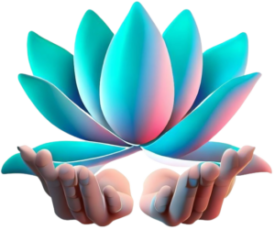
The Science of Glowing Skin: Understanding the Benefits of LED Light Therapy
Introduction
Skincare has become an increasingly important aspect of our daily routines and with good reason. Our skin is the largest organ in our body and serves as a protective barrier against environmental factors such as pollution, UV radiation, and bacteria. As such, it is important to take care of our skin to maintain its health and appearance. One popular treatment option that has gained traction in recent years is LED light therapy. In this article, we will explore what LED light therapy is, how it works, and its benefits for skin health.
What is LED Light Therapy?
LED light therapy is a non-invasive treatment that uses different wavelengths of light to penetrate the skin and stimulate cellular activity. The therapy involves exposing the skin to specific wavelengths of light, which are absorbed by the skin cells and trigger various biological processes. LED light therapy can be used to treat a variety of skin concerns, including acne, hyperpigmentation, wrinkles, and rosacea. There are different types of LED lights used in therapy, each with its own unique benefits. Red light, for example, is commonly used to stimulate collagen production and improve skin texture, while blue light is used to kill acne-causing bacteria. Green light is used to reduce hyperpigmentation and redness, while yellow light is used to improve skin elasticity and reduce inflammation.
How Does LED Light Therapy Work?
The science behind LED light therapy involves the interaction between light and skin cells. When the skin is exposed to specific wavelengths of light, it triggers a process called photobiomodulation, which stimulates cellular activity and promotes healing. Different wavelengths of light penetrate the skin to different depths, with red light penetrating the deepest and blue light penetrating the most superficial layers. The different wavelengths of light affect the skin in different ways. Red light, for example, stimulates collagen production and improves blood circulation, which can lead to improved skin texture and tone. Blue light, on the other hand, kills acne-causing bacteria and reduces inflammation, making it an effective treatment for acne. Green light targets melanocytes, which are responsible for producing melanin, and can help reduce hyperpigmentation and even out skin tone.
The Benefits of LED Light Therapy for Skin Health
LED light therapy has numerous benefits for skin health. It can improve skin texture, tone, and overall appearance, and can be used to treat a variety of skin concerns. LED light therapy is non-invasive and does not involve any downtime, making it a convenient treatment option for those with busy schedules. In addition to its cosmetic benefits, LED light therapy can also promote overall skin health. By stimulating cellular activity, LED light therapy can help improve the skin's natural defenses against environmental factors such as pollution and UV radiation.
LED Light Therapy for Acne Treatment
LED light therapy has been shown to be an effective treatment for acne. Blue light, in particular, has been found to be effective in killing acne-causing bacteria and reducing inflammation. A study published in the Journal of Cosmetic and Laser Therapy found that blue light therapy was effective in reducing acne lesions in patients with mild to moderate acne. LED light therapy can also be used in combination with other acne treatments, such as topical medications or chemical peels, to enhance their effectiveness. LED light therapy is a safe and non-invasive treatment option for acne, with no known side effects.
LED Light Therapy for Anti-Aging and Wrinkle Reduction
LED light therapy can also be used to reduce the appearance of wrinkles and fine lines. Red light, in particular, has been found to be effective in stimulating collagen production, which can help improve skin elasticity and reduce the appearance of wrinkles. A study published in the Journal of Cosmetic Dermatology found that red light therapy was effective in reducing the appearance of wrinkles in patients with mild to moderate photoaging. LED light therapy can also be used in combination with other anti-aging treatments, such as retinoids or chemical peels, to enhance their effectiveness. LED light therapy is a safe and non-invasive treatment option for anti-aging, with no known side effects.
LED Light Therapy for Hyperpigmentation and Dark Spots
LED light therapy can also be used to reduce hyperpigmentation and dark spots. Greenlight, in particular, has been found to be effective in reducing the production of melanin, which can help even out skin tone. A study published in the Journal of Cosmetic and Laser Therapy found that green light therapy was effective in reducing hyperpigmentation in patients with melasma. LED light therapy can also be used in combination with other treatments, such as chemical peels or topical medications, to enhance their effectiveness. LED light therapy is a safe and non-invasive treatment option for hyperpigmentation, with no known side effects.
LED Light Therapy for Rosacea and Redness
LED light therapy can also be used to reduce redness and inflammation associated with rosacea. Greenlight, in particular, has been found to be effective in reducing redness and inflammation. A study published in the Journal of Cosmetic and Laser Therapy found that green light therapy was effective in reducing redness and inflammation in patients with rosacea. LED light therapy can also be used in combination with other treatments, such as topical medications or laser therapy, to enhance their effectiveness. LED light therapy is a safe and non-invasive treatment option for rosacea, with no known side effects.
The Safety and Efficacy of LED Light Therapy
LED light therapy is a safe and effective treatment option for a variety of skin concerns. It is non-invasive and does not involve any downtime, making it a convenient treatment option for those with busy schedules. LED light therapy has no known side effects and is well-tolerated by most patients. However, it is important to note that LED light therapy is not a substitute for medical treatment. If you have a skin condition that requires medical attention, it is important to consult with a dermatologist or other medical professional.
How to Incorporate LED Light Therapy into Your Skincare Routine
LED light therapy can be incorporated into your skincare routine in a variety of ways. There are numerous at-home LED light therapy devices available on the market, ranging from handheld devices to full-face masks. These devices can be used in the comfort of your own home and can be incorporated into your existing skincare routine. It is important to follow the manufacturer's instructions when using an LED light therapy device. Most devices recommend using the device for a certain amount of time each day or each week, depending on the specific device and skin concern.
Choosing the Right LED Light Therapy Device for Your Skin Concerns
When choosing an LED light therapy device, it is important to consider your specific skin concerns. Different devices use different wavelengths of light, and some devices may be more effective for certain skin concerns than others. It is also important to consider the quality and safety of the device. Look for devices that have been tested and approved by regulatory agencies, such as the FDA. It is also important to read reviews and do your research before purchasing a device.
Conclusion
LED light therapy is a safe and effective treatment option for a variety of skin concerns, including acne, hyperpigmentation, wrinkles, and rosacea. It is non-invasive and does not involve any downtime, making it a convenient treatment option for those with busy schedules. LED light therapy can be incorporated into your existing skincare routine and can be used in combination with other treatments to enhance their effectiveness. If you are interested in trying LED light therapy, consult with a dermatologist or other medical professional to determine if it is right for you.
Ready to book your session?
Your cost: $20. Get in touch today!



You must be logged in to post a comment.